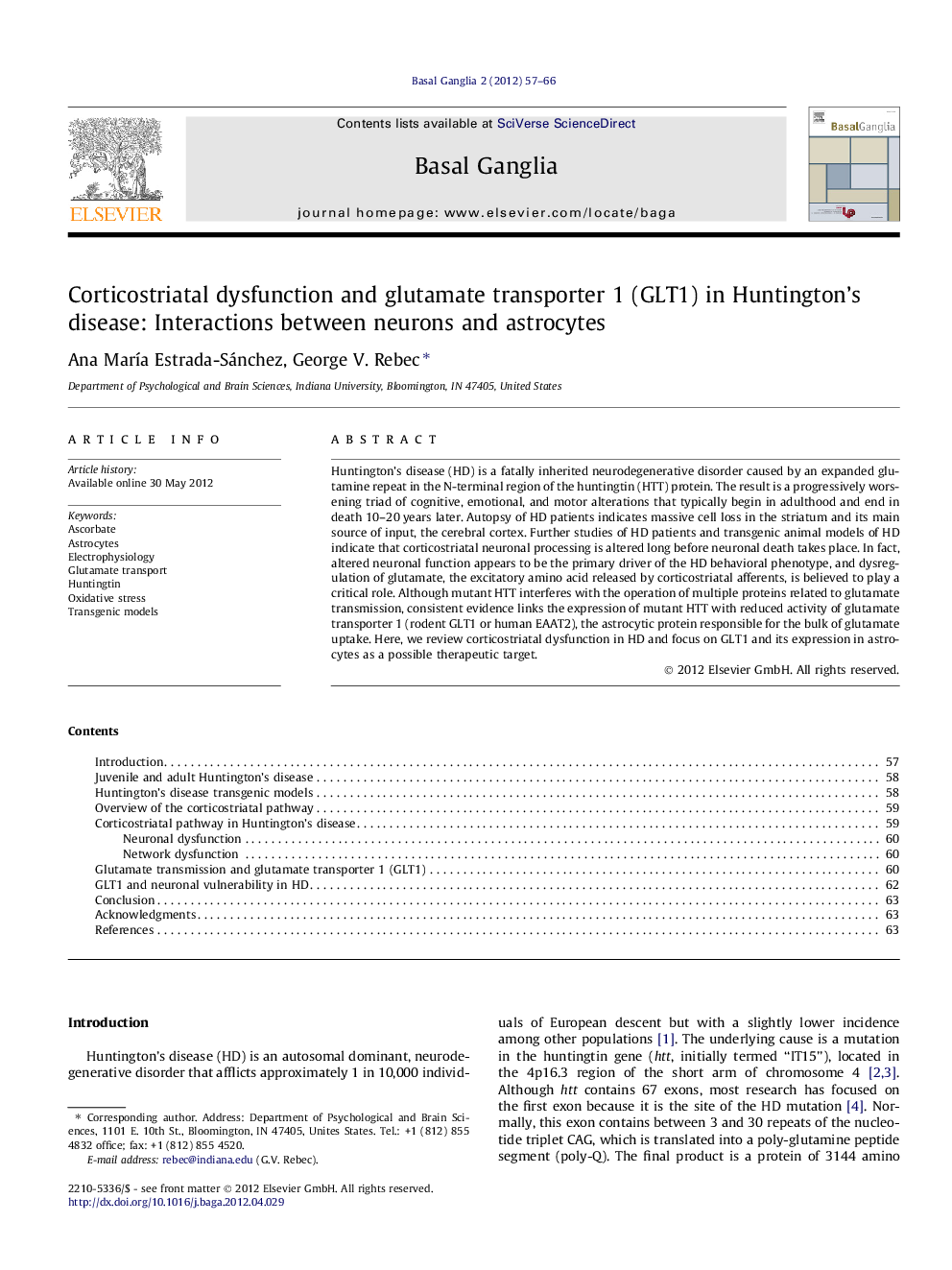| کد مقاله | کد نشریه | سال انتشار | مقاله انگلیسی | نسخه تمام متن |
|---|---|---|---|---|
| 6005060 | 1184365 | 2012 | 10 صفحه PDF | دانلود رایگان |

Huntington's disease (HD) is a fatally inherited neurodegenerative disorder caused by an expanded glutamine repeat in the N-terminal region of the huntingtin (HTT) protein. The result is a progressively worsening triad of cognitive, emotional, and motor alterations that typically begin in adulthood and end in death 10-20Â years later. Autopsy of HD patients indicates massive cell loss in the striatum and its main source of input, the cerebral cortex. Further studies of HD patients and transgenic animal models of HD indicate that corticostriatal neuronal processing is altered long before neuronal death takes place. In fact, altered neuronal function appears to be the primary driver of the HD behavioral phenotype, and dysregulation of glutamate, the excitatory amino acid released by corticostriatal afferents, is believed to play a critical role. Although mutant HTT interferes with the operation of multiple proteins related to glutamate transmission, consistent evidence links the expression of mutant HTT with reduced activity of glutamate transporter 1 (rodent GLT1 or human EAAT2), the astrocytic protein responsible for the bulk of glutamate uptake. Here, we review corticostriatal dysfunction in HD and focus on GLT1 and its expression in astrocytes as a possible therapeutic target.
Journal: Basal Ganglia - Volume 2, Issue 2, July 2012, Pages 57-66